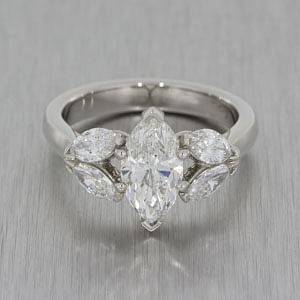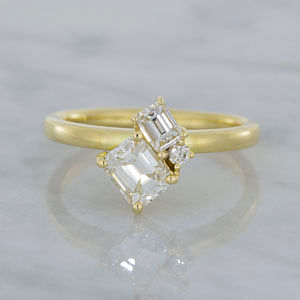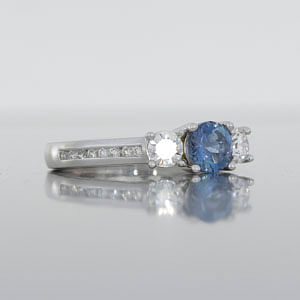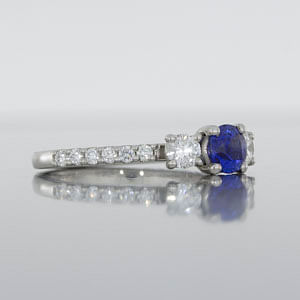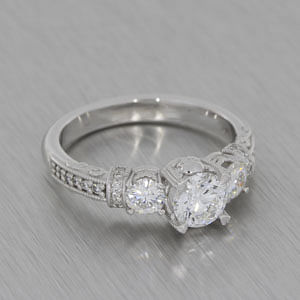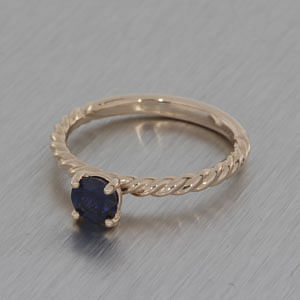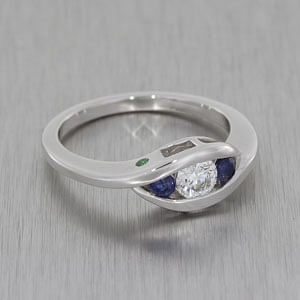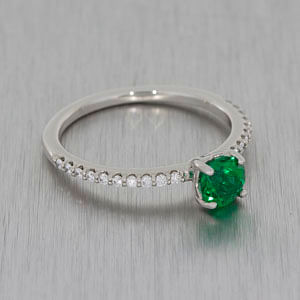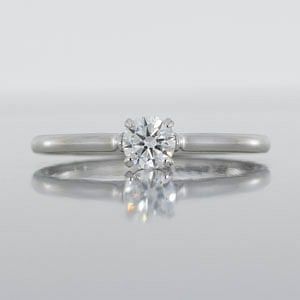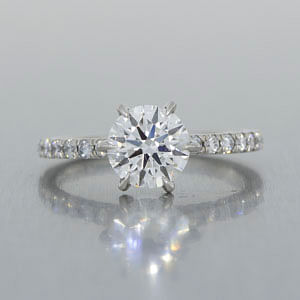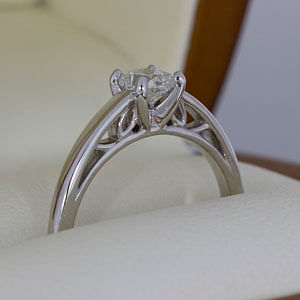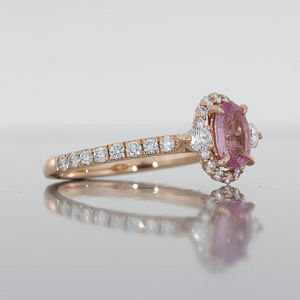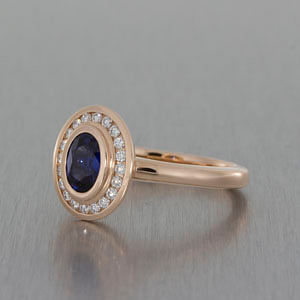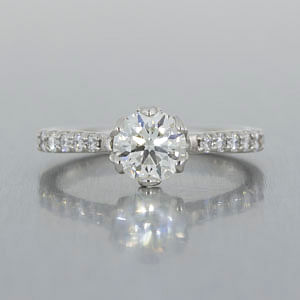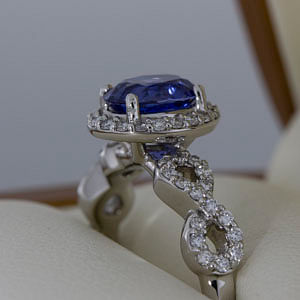Why Diamond Cut Matters
The GIA evaluates a round brilliant diamond’s cut grade based on the brightness, fire, scintillation, weight ratio, durability, polish and symmetry. Cut is graded from Excellent to Poor by the GIA and IGI and Ideal to Poor by the AGS .
Diamond cut is a very new addition to the criteria for grading diamonds, it was only introduced by the GIA in 2006. Across even the most highly regarded diamond grading laboratories the criteria for classifying diamond cut can be loose and the figures which are used to assess cut grade are based on mean averages. This means that two diamonds, both graded Excellent in cut, could have significantly different light performance. Furthermore Fire and Brilliance are not graded at all.
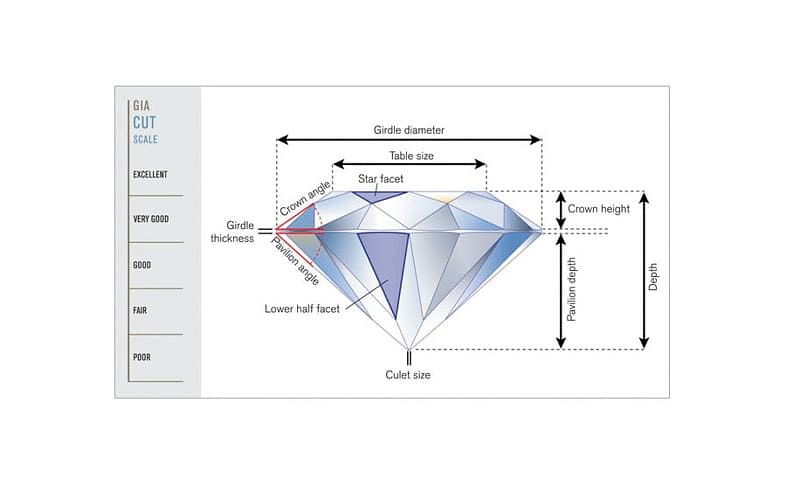
Until the standardised grading of diamonds catches up with technology, it is down to jewellery geeks like us to educate ourselves and our clients in how to find the best cut diamonds for your jewellery.
If diamond cut is of number one importance to you, why not read about Crafted by Infinity Diamonds.
We feel that after speaking to a professional about this topic, as well as the other ‘C’s’, you will come away with a far less conflicted opinion and feel confident in your diamond decision.
→ Return to Top
Rarity vs Quality
When assessing diamonds, the universally accepted grading system takes into account the Four Cs but these can be separated into two value factors. A diamond’s rarity and diamond’s quality.
Rarity
This to the fixed and unchangeable characteristics of a diamond. Diamonds of high size, colour and clarity command high prices because these characteristics are rare.
Quality
When it comes to cut, the level of quality is in our hands. Cut is dictated by the technology, skill and passion of the diamond cutter. The joy or disappointment experienced when looking at your diamond can be a direct result of just how expertly it was cut.
Hearts and Arrows
Durham Rose’s technical vision is symbolized by the ‘Hearts and Arrows’ diamond image here. To us, the ‘Hearts and Arrows’ represents technical excellence and the embodiment of genuine scientific analysis of diamond light performance. We feel that the majority of Clients experience of buying a diamond has now become quite laborious and somewhat stale; the marketplace is now simply opaque. We want to perform above and beyond any standard, commercial jewellery retailer. To do so, we integrate true diamond analysis into each of our designs and we transfer this knowledge to you, our clients, operating against the tide of traditional market methodologies.
What Are Hearts and Arrows?
‘Hearts and Arrows’ refers to a pattern found in certain diamonds. It is a specific symmetrical light pattern that is revealed to the eye through the use of specialized tools, such as a Firescope or the ‘Ideal-scope or ASET scope’ viewers (pictured below).
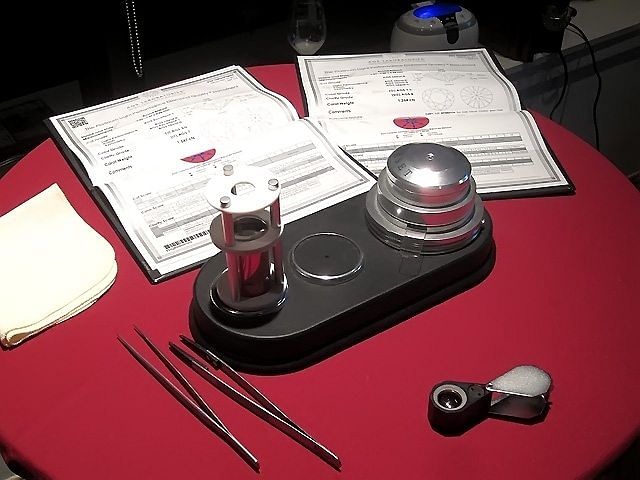
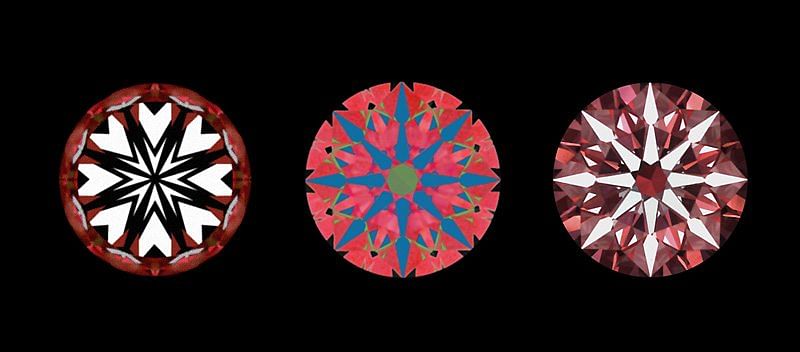
Crafted by Infinity are an elite team of jewellery experts provides an outstanding understanding of the optimal diamond cut; they have a strict diamond tolerance quality that outperforms way beyond the current G.I.A wide spectrum of ‘excellent’ ensuring that our clients walk away not only with a completely custom ring with sentimental depth but complimented unmatched performance diamonds, every day, over a lifetime.
Where Did Hearts And Arrows Originate From?
Hearts and Arrows as a recognizable pattern was accidentally discovered in Japan by Kazumi Okuda through the use of one his tools; a Firescope. This was a tool developed by Kazumi in the 1970’s when much of the exciting industry were still exploring cut grading. This pattern was later trademarked in 1980’s and thus began the ‘Hearts and Arrows’ U.S marketing phenomenon. This was evident in the 1990’s and still to date, where many diamond manufacturers cut diamonds to a specification that produced this distinctive pattern, occasionally at the expense of overall cut quality.
Why Is It Important?
In a round brilliant cut diamond, a clearly defined set of eight symmetrical hearts and eight symmetrical arrows is a sign of excellent optical symmetry which suggests an important component of cut. However, even though the existence of such optical symmetry alludes to the diamond being a ‘superior cut’, this is not necessarily a guarantee.
Whilst a diamond may display what appears to be a distinct hearts and arrows pattern, several subtle yet significant details in the spacing, exact shape and positioning of the pattern can have a large impact on the desirability and therefore value. Equally, the formation of a true, precise Hearts and Arrows pattern is due to the extreme care that is taken when polishing each facet to exact angles and proportions. This level of precision goes way beyond the criteria needed to achieve an “excellent” symmetry rating and as such, not all diamonds with an AGS ‘Ideal’ or GIA ‘Excellent’ cut grading will qualify it as a ‘Hearts and Arrows’ diamond.
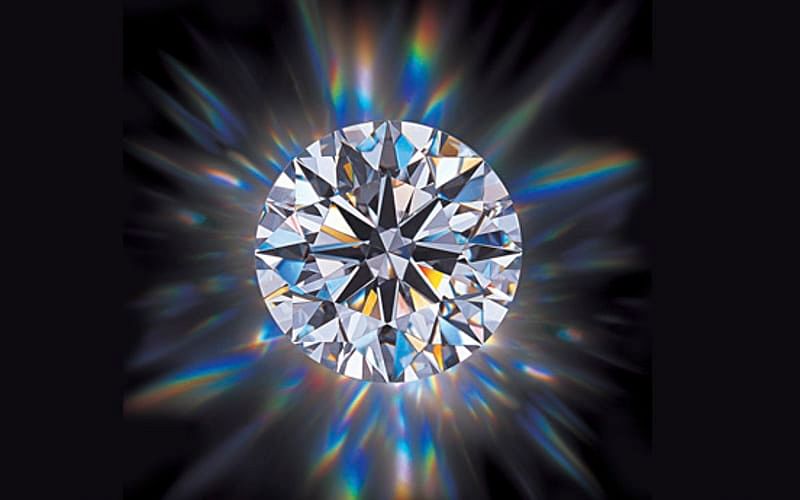
One of the most substantial benefits of the steadily increasing popularity of the Hearts and Arrows pattern is in the attention it casts upon the cut grading industry. In our section ‘Cut Grade’ as part of our Four C’s education, we discuss how the growth of knowledge of client purchasing has led to an increase in the importance placed upon cut and symmetry in the overall appearance of a diamond, and how this will only steadily improve cut grading for future investments.
Sadly, there are some jewellers and retailers in the diamond sector that use the “Hearts and Arrows” term to market their stock of diamonds at a higher value than it is actually worth. We recommend that you exercise caution when any retailer that is attempting to sell you a ‘super ideal’ diamond. Please ask them to provide you with all the paperwork to justify this claim; this includes diamond certification with its Hearts and Arrows images (via ASET or Ideal-Scope) included. Sadly, not everyone who deals in diamonds does so with integrity.
Durham Rose want you to get the best value for your money and understanding what to look for and equally what to avoid in your search for your forever stone is something we would be delighted to help you with. Please contact one of our diamonds experts today.
→ Return to Top
ASET
The key to choosing your forever stone is by carefully reviewing and understanding its cut quality and light performance; referring specifically to the diamond’s fire and brilliance. The best way to do so is through an ingenious device called the ASET.
What Is ASET?
The Angular Spectrum Evaluation Tool, more commonly known in the industry as ‘ASET’ is a device created by the American Gemological Society (AGS). The AGS ASET is a scientific tool that shows where a diamond collects light in the hemisphere above, and whether that light properly returns to the viewer’s eyes, or leaks-through and is lost. It allows for a large quantity of information to be gathered in a relatively simple manner; of which is then passed onto you through your diamond retailer, predominantly through your diamond certification.
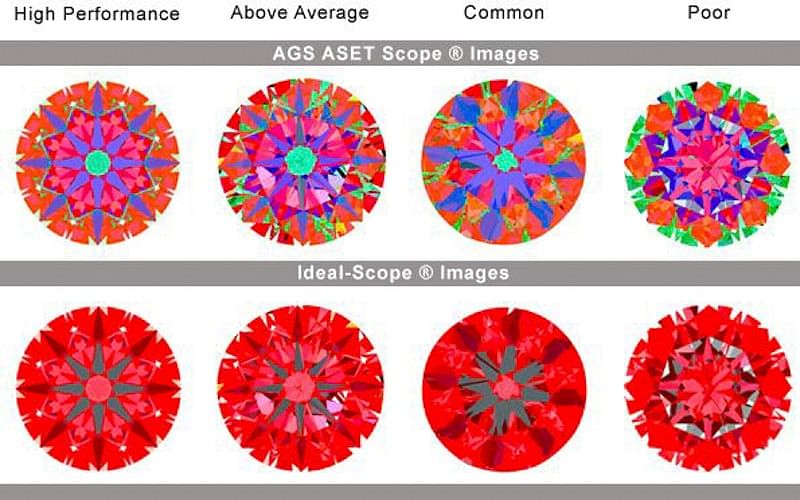
How Does It Work?
As mentioned above, by viewing a diamond from the top of a hemisphere (painted with different colours to delineate specific angular ranges) the light will appear in different colours depending on where that light is coming from. It will also indicate areas of the diamond that may not be returning light, commonly referred to as ‘light leakage’.
The views that the ASET produces of a well-cut ‘round brilliant’ diamond will show a preponderance of red, minuscule flecks of green, a symmetrical pattern of blue and extremely low light leakage, as seen in the image below.
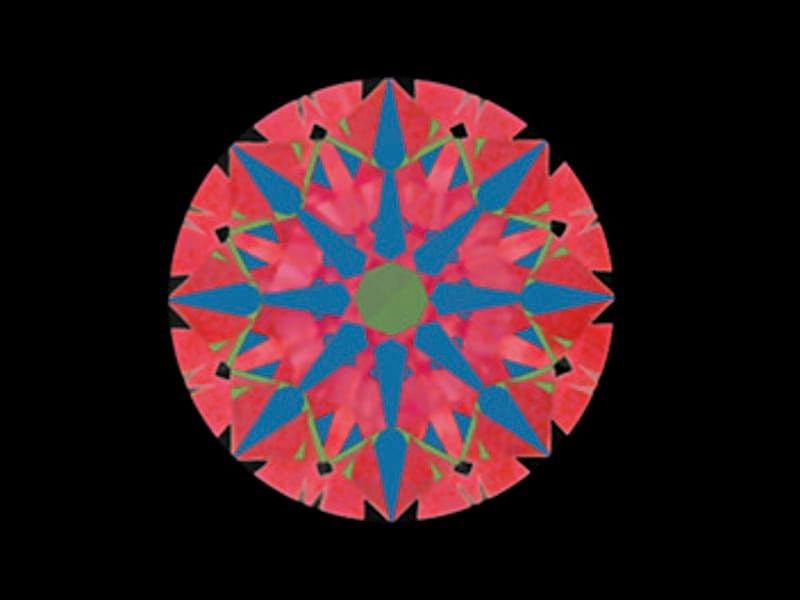
ASET Devices
There are several different versions of the ASET tool. There are handheld and desktop models as well as many different improvised photo setups. There are backlit versions and versions with dark background; the former will show leakage as white, the latter will show leakage as black.
We at Durham Rose, use the Crafted by Infinity ‘Infinity Viewer’ which allows for three separate inspections to be conducted to ensure the highest possible assessment is done.
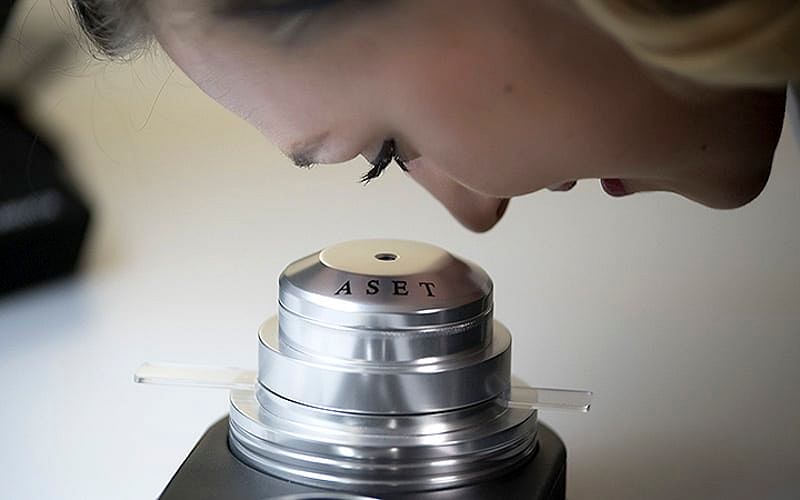
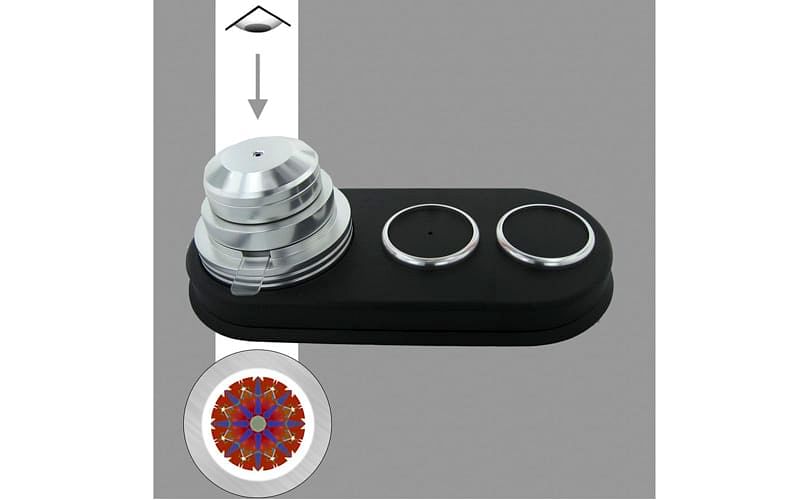
Why Is It Important?
ASET based analysis holds many strengths but, but a surprising element is that it can be applied to ANY shape diamond. AGS now have grading systems for Round, Princess, Oval, Emerald Cut, and certain Cushion stone shapes. It should be noted that ‘Fancy’ shaped diamonds have variable ASET signatures; however, through using an ASET assessment, it can provide the client with an insight into how the diamond is performing in relation to its light performance and more importantly, leakage and how that can impact on the value of your diamond. Through the process of procurement to delivering it safely to your loved one, the ASET enables us at Durham Rose to give you the best technical understanding, value for money and reassurance that your forever piece has been made with the utmost attention to every detail. See more on how we select diamonds here.
→ Return to Top
Inclusion Types
What some see as a flaw, others will see as full of character; let Durham Rose help explain how to view these clarity characteristics commonly known as ‘Inclusions’
What Is An Inclusion?
It takes tremendous heat and pressure to convert graphite into diamonds. Over time diamonds form and as they do the environment could change slightly or other small changes might occur which could cause diamonds to have what we call ‘clarity characteristics’ or inclusions. These help to determine whether the diamond is natural or lab grown depending on the types of inclusions, as well as identifying individual stones.
Inclusions can be internal or external characteristics on the stone. These can be due to the environment in which they form or the way in which they are cut.
Types of Inclusion
To help our more curious clients learn more about diamonds we have compiled a list of the types of inclusions you might see looking through a microscope.
Very small feathers that extend from the girdle surface into the stone; can result from the cutting process.
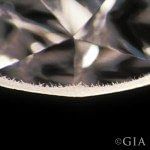
A tiny area of impact accompanied by very small, root-link feathers; typically occurs at a facet junction.
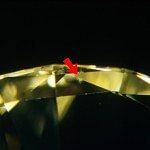
An angular opening created when part of a feather breaks away or when a surface-reaching crystal drops out or is forced out during polishing.
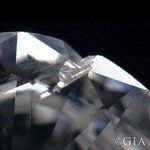
A shallow opening caused by damage to the stone’s surface that typically occurs at a girdle edge, facet junction, or culet.
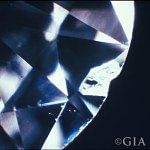
Many tightly grouped pinpoints that might be too small to distinguish individually but together have a hazy appearance.
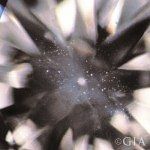
A mineral crystal contained in a diamond.
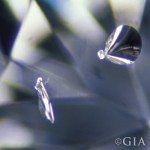
General trade term for a break in a gemstone, often white and feathery in appearance.
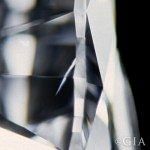
A small, concentrated area of crystal distortion; can be white or dark, and might have a thread-like or pinpoint-like appearance.
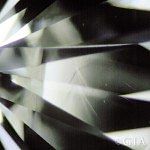
A portion of the rough diamond’s original surface that dips below a polished diamond’s surface.
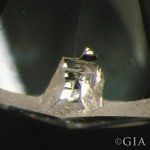
Lines, angles, or curves that might appear whitish, colored, or reflective, or affect transparency at 10X magnification; caused by irregularities in crystal growth.
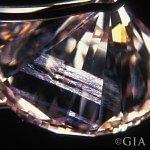
Laser drilling within a diamond that creates a surface-reaching feather, or expands a pre-existing feather around a dark inclusion so that it reaches the surface. The feather then provides access for bleaching to decrease the visibility of the inclusion.
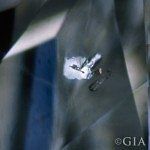
A white or transparent diamond crystal that extends to the surface after fashioning.

A tiny, surface-reaching tunnel produced by a laser light beam.
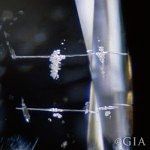
A thin, elongated crystal that looks like a tiny rod at 10X magnification.
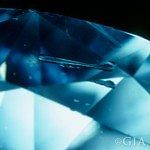
A very small crystal that looks like a tiny dot at 10X magnification.
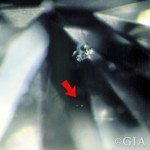
A series of pinpoints, clouds, or crystals that forms in a diamond’s growth place; associated with crystal distortion and twinning planes.

If you enjoyed reading about the different types of diamond inclusions, you can read more on how they affect the clarity grades awarded to diamonds in our Diamond Knowledge section.
“Inclusions; What is an inclusion? Let Durham Rose extend your knowledge on stone inclusions and what they really mean in terms of clarity.”
→ Return to Top
Fluorescence
Fluorescence is characteristic which occurs in roughly 25% – 35% of diamonds, causing the stone to produce a colour reaction (usually blue) in response to ultraviolet light. Diamonds are made from 99.95% carbon and it’s the presence of elements such as nitrogen, aluminium and boron within the 0.05% that causes this phenomenon.
Fluorescence, particularly ‘strong fluorescence’ is generally avoided as it can make a diamond appear hazy. However in some instances, faint blue fluorescence can improve the appearance of a diamond with low colour, in making it look whiter in daylight.
→ Return to Top
Alternative Diamond Types
When it comes to choosing your centre stone, while many go for the traditionally classic white diamond, there is an steady rise in the amount of alternative options to choose from which alternative and more modern couples are utilising.
With unique options like; Salt and Pepper, Grey, Antique cut and Rough ‘raw’ diamonds, it is becoming increasingly easier to design a truly custom, one of a kind personal piece through our bespoke design service.
Antique and Vintage Cuts
Antique and Vintage style jewellery is having a surge in popularity, due to this, we are seeing many more rose cut, old mine cut and old European cut diamonds being re modeled or sourced to be set in new designs. See here for more examples and to see how the diamond cut evolved over time.

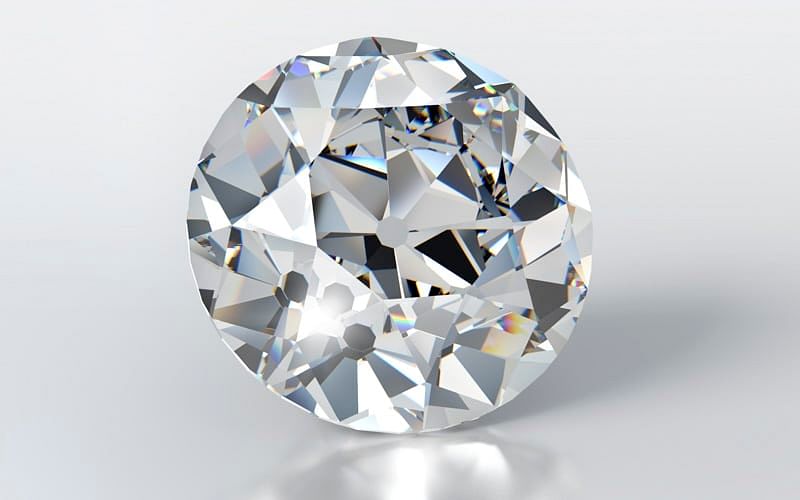
Rough Diamonds
In the past couple of years, rough diamonds are also having a surge in popularity. They are so unique in shape and size, that each piece is a complete one of a kind. The imperfections in these rough stones symbolize that life is never perfect, it will always have ups and downs but its the strength and the durability that gets you through it, much like the characteristics of a diamond.
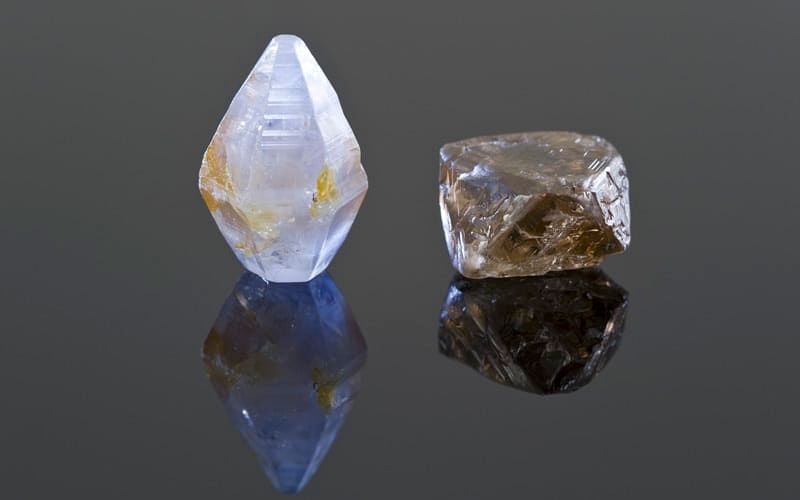
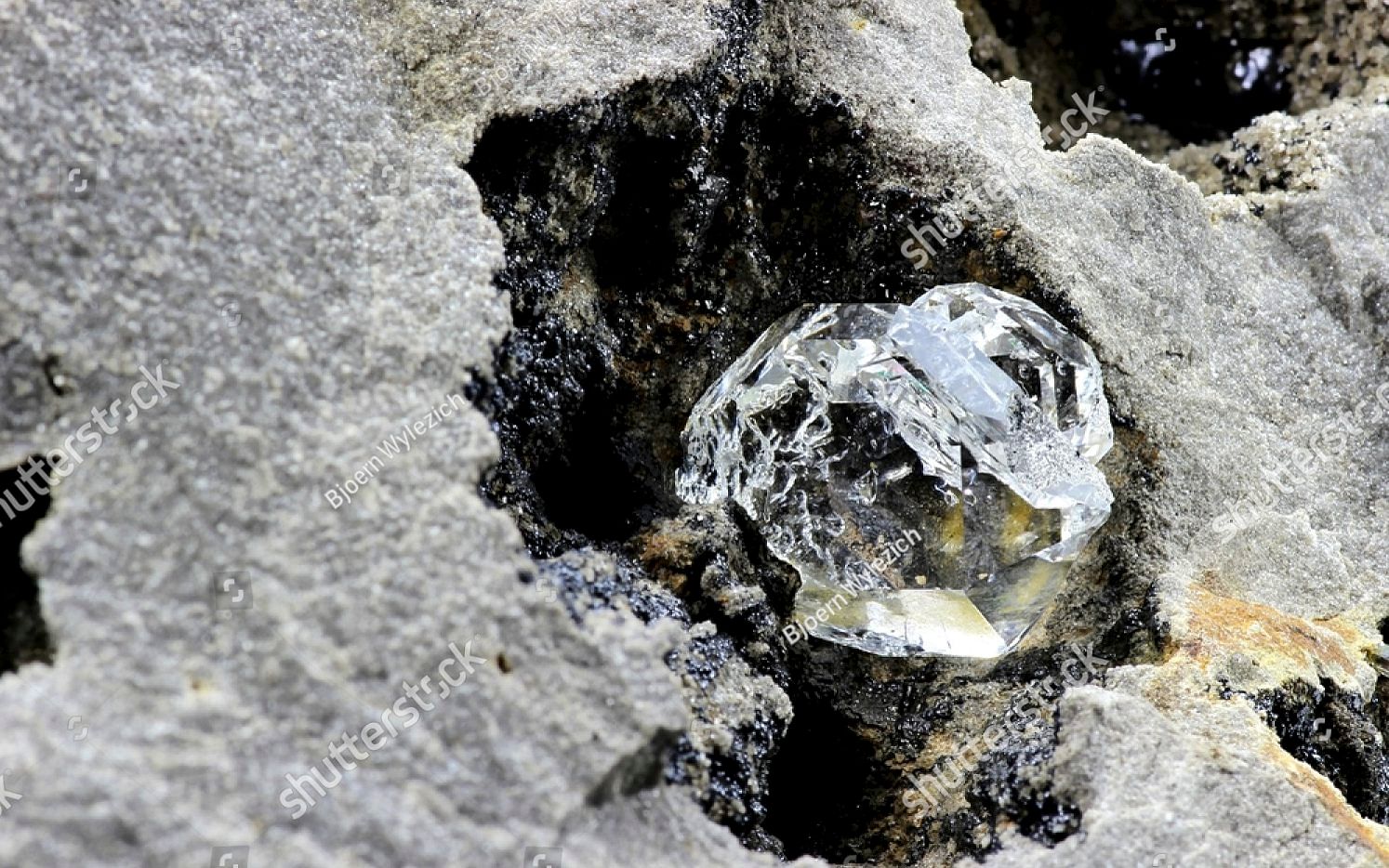
Grey and Salt & Pepper Diamonds
These have been increasing in popularity greatly in recent times with customers preferring the less flashy look and are after an option which is more understated and unusual. Fancy grey diamonds, which are much rarer are grey due to the chemical element in the stone which gives it the grey colour, this is different from the highly included grey diamonds which are grey in colour from the type of inclusions in the stones. Fancy grey diamonds get their colour from high concentrations of hydrogen or more rarely- boron. Unlike other fancy colour diamonds, where the colour is valued on the saturation of colour. With grey diamonds, the colour is tonal and almost always has a secondary colour. For example, if the stone is graded as Fancy Blue-Grey, it will be much more highly prized than a Fancy light grey diamond.
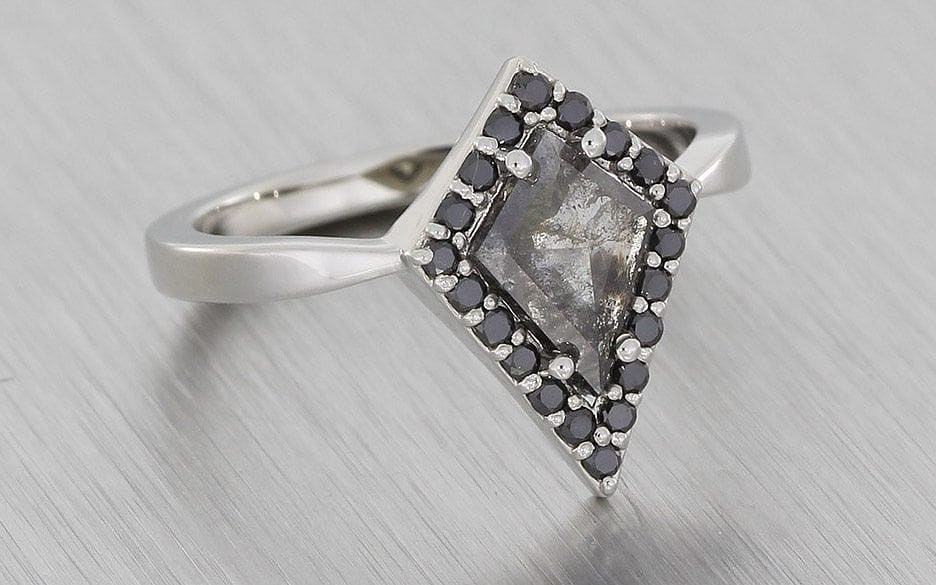
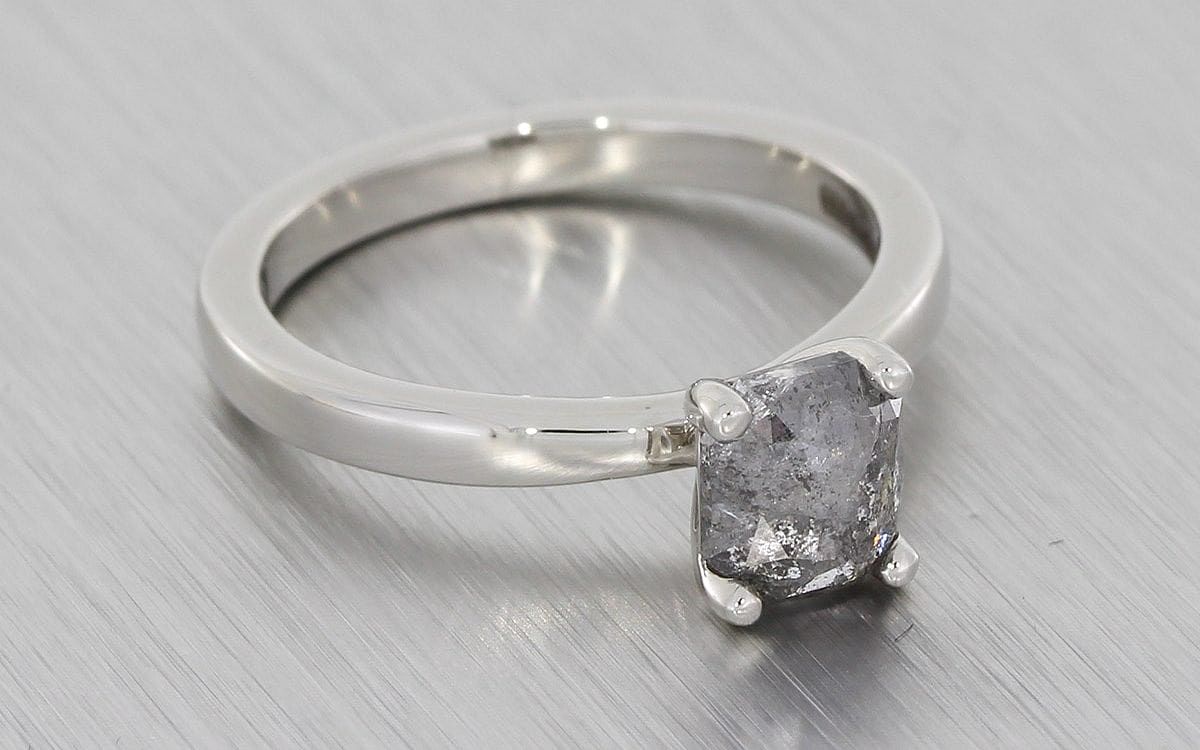
Inclusions And Clarity
If you have researched about the 4C’s and specifically clarity, you will have read about different types of inclusions and what they might look like. Salt & Pepper diamonds are essentially white diamonds which are highly included with white and black crystals. The beauty of this is that each stone therefore is completely unique with their own map of included crystals in the stone. Sometimes white diamonds on the existing clarity scale can seem unattainable in terms of the standard of perfection and the price that goes along with that. Grey and Salt & Pepper diamonds are a great way to design a unique ring at a more affordable price.
“Alternative Diamond Choices; ‘I don’t want to buy a diamond engagement ring, are there any alternatives I can buy instead?’ Yes. See a variety of gemstone choices in our gemstone catalogue”
→ Return to Top
AS SEEN IN





